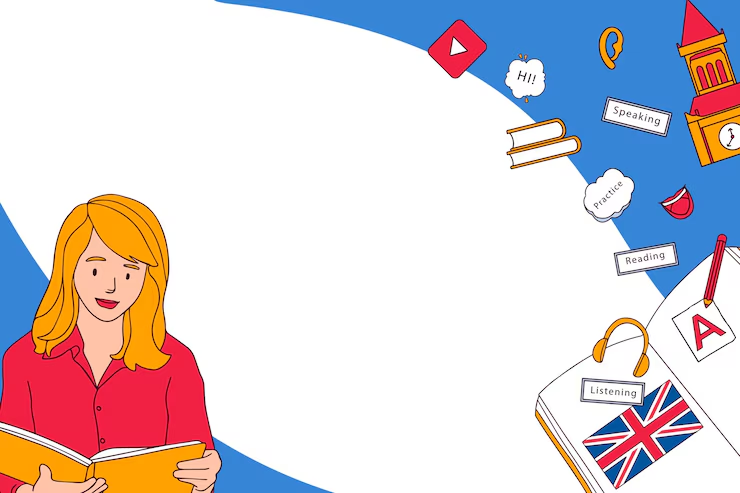Top English Levels Explained: Beginner to Proficient
Have you ever considered what your present level of English actually signifies? Knowing your English level will help you whether you are getting ready for IELTS or simply want to have a confident discussion. The CEFR—short for Common European Framework of Reference for Languages—is the framework used worldwide.
It divides English levels into six distinct stages. These phases enable you to assess your reading, writing, listening, and speaking abilities. This article will guide you through each stage in straightforward language, with practical uses, so you know just where you are and what follows.
Why English Levels Matter
English levels are not only about academic words. They inform you what sort of discussions you may have, what material you can study, and even what tests or job interviews you are prepared for. Imagine still questioning fundamental grammar as you attempt to plunge into an English business meeting. Knowing your level is, therefore, the first genuine action toward enhancing your spoken English.
CEFR levels enable you to establish reasonable objectives. For example, someone targeting IELTS Band 7 often has to attain B2 or C1. A research found that students who knew their CEFR level progressed more quickly than those who did not. Knowing your whereabouts saves time, increases confidence, and reduces annoyance on the journey.
A0/A1 English Level – The Real Beginner
Everything begins here. A0 indicates you are quite new. You could know a few words like "hello" or "thank you," or perhaps none at all. Things at A1 start to pick up. You may tell a little about your daily life, ask for directions, and introduce yourself. It's like attempting to swim with floaties; you're not moving far, but you're getting used to the water.
The key at this point is knowing fundamental English grammar. You will begin to study sentence patterns such as "I am a student" or "She is at home." Should you ever search "1000 English sentences used in daily life," this is where those are useful. Here, repetition is your closest ally.
A2 English Level – Pre-Intermediate, Building the Basics
The floaties are gone now. Though you're still in shallow water, you're progressing. At the A2 level, you can manage daily activities like shopping, food ordering, or light weather conversation. If others talk slowly and clearly, you may grasp basic terms. You can talk in straightforward phrases about your family or profession.
This is a significant jump since it's when spoken English starts to feel more natural. Though now you're mixing concepts, you're still following fundamental English syntax. You could say, "I went to the market and bought some apples." Though simple, it works. At this point, regular exposure—especially speaking out loud—is absolutely vital.
B1 English Level – Intermediate and Independent
B1 is where things get exciting. You can talk about topics like work, hobbies, and travel. You understand general content on the radio or TV if the speech is slow and clear. You’re not fluent, but you’re definitely functional. Think of it as riding a bicycle—you might wobble, but you’re moving independently.
Here, a big chunk of your improvement will come from practice. A research paper published by the British Council notes that learners at this level benefit the most from regular speaking exercises. This is the phase where most learners search for tips on how to improve English beyond just textbooks. The key is combining conversation, listening, and writing every day—even if it’s just texting in English or narrating your daily routine to yourself.
B2 English Level – Upper-Intermediate, Welcome to Fluency
At B2, you’re able to have long conversations, argue your opinion, and understand detailed discussions—even if the topics are unfamiliar. This is where you stop “translating” in your head. You think in English. You also start understanding jokes, sarcasm, and cultural references. It’s like when you’re finally getting the jokes in your favorite English sitcom.
People at this level can understand abstract ideas and express themselves spontaneously without searching too much for words. They usually know over 4,000 to 5,000 words and can use them flexibly. According to a global English proficiency index, people with B2 fluency are more likely to land jobs in multinational companies or pass exams like IELTS with scores of 6.5 to 7.5.
C1 English Level – Advanced, The Confident Communicator
C1 users are smooth. You understand long, complex texts and can pick up on implied meanings. You can speak fluently, clearly, and without searching for expressions. You’re the kind of person who can join a panel discussion, write formal emails, and negotiate with ease. English becomes your second skin.
Even if you don’t know every word, you know how to work around it. You’ve mastered basic English grammar and gone beyond it—now you’re using advanced structures naturally. You can say things like, “Despite the challenges, we proceeded with the launch,” without overthinking it. At this point, regular exposure to academic articles, professional talks, and high-level discussions is what keeps your skills sharp.
C2 English Level – Proficient, The Native-Like User
This is the top of the mountain. If you’re at C2, you can understand virtually everything you read or hear. You can express yourself precisely, even when talking about subtle emotions or complex technical topics. You’ve not only mastered the language but also its rhythm, humor, and tone.
Only a small percentage of non-native speakers reach this level, but it’s not impossible. People at C2 usually engage with content that native speakers consume—news reports, novels, podcasts, and even satire. According to the EF English Proficiency Index, fewer global English learners ever reach this stage. But if you’re aiming to study at top universities or work in a language-intensive field, this is your goal.
How to Improve English at Any Level
No matter where you start, consistency beats talent. Read aloud. Record yourself. Talk to a friend or even to your mirror. Watch shows with subtitles. Listen to podcasts during your commute. Memorizing 1000 English sentences used in daily life? Not a bad idea. But real improvement comes from interaction and feedback.
A stat worth knowing: learners who actively practice spoken English with feedback improve faster than those who just passively consume content. And it’s not just about speaking more—it’s about speaking better. That’s where guided tools come in.
Where Speechful.ai Comes In
At Edvent AI, we’ve seen firsthand that learners don’t fail because they’re lazy or untalented. They struggle because they don’t know what to practice or how to get better. That’s why we built Speechful.ai. Whether you're at A1 or aiming for C2, our platform adapts to your English level and gives you exactly what you need—real speaking practice with an AI that listens, responds, and gives feedback.
You get to build your own IELTS-style tests, have interactive conversations with follow-up questions, and receive corrections for every answer. You’ll know your current English level, track your progress, and get personalized tips on how to improve English day by day. It’s like having a private tutor, 24/7.
Conclusion
Your English level isn’t just a label. It’s a roadmap. From saying your name at A1 to debating ideas at C2, each level brings new confidence. It’s okay to be a beginner. What matters is taking that next step—and then the next one. Whether you’re brushing up on basic English grammar or hoping to master spoken English, know this: progress is possible, and it’s within reach. With platforms like Speechful.ai, every learner gets a real chance to grow.
Ready to find your English level and start improving? Visit Speechful.ai and start speaking your way to fluency.



